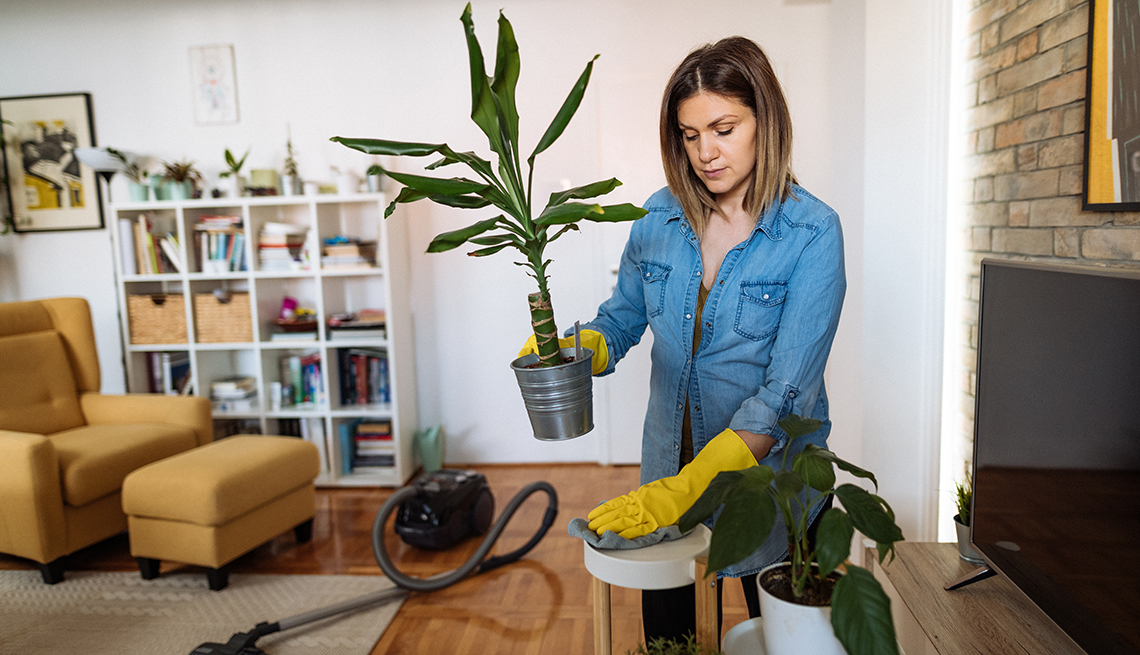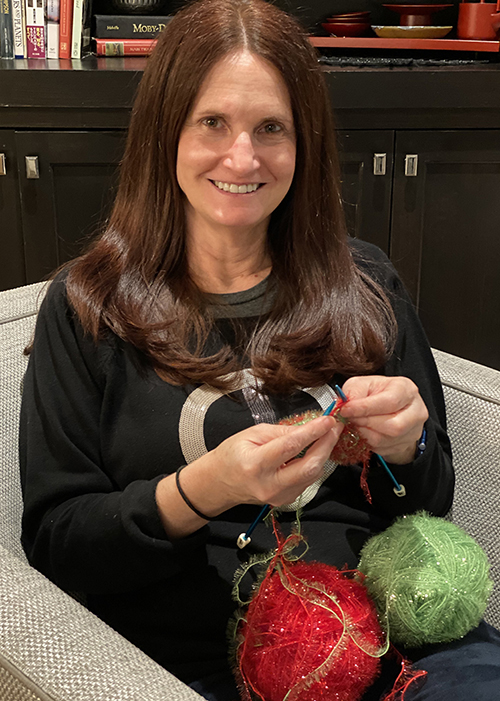AARP Hearing Center
For some, more time at home has meant more time to notice dust under the couch, tackle cluttered closets or do those deep-cleaning projects that were once regularly put off. With COVID-19 forcing people to hunker down, it's also making them aware of the dirt and grime that may have accumulated when lives were not so confined.
But should you swap out that spray that's been part of your cleaning rotation for decades in favor of a greener version? Is there a better way to remove that bathroom grunge? Perhaps it's time to rethink your housecleaning routine and the tools and strategies to do it.
Arm yourself with greener cleaners
"If you want to clean your home with confidence, start by cleaning out your cleaning closet,” says Donna Smallin Kuper, 60, a certified housecleaning technician and author of a dozen books including The One-Minute Cleaner Plain & Simple: 500 Tips for Cleaning Smarter, Not Harder.
5 Eco-Friendly Cleaning Hacks Using Pantry Staples
1. Make a vinegar-based cleaner for dirty vertical surfaces like shower doors, walls and faucets: Whisk a half-cup of vinegar and 1 1/2 tablespoons of cornstarch together in a saucepan on medium heat for about 10 minutes, stirring constantly. Once the mixture has thickened, allow it to cool. Store in an airtight container or squeeze bottle.
2. To get rid of caked-on buildup on your showerhead: Mix 1/3 cup baking soda and one cup of vinegar until the mixture foams, then pour into a small plastic bag. Slide the bag over your showerhead, and secure it on top tightly with twist ties. Leave it there overnight, then remove the bag and rinse the showerhead with warm water.
3. Clean grimy barbecue grill racks: Brush with vegetable oil and sprinkle with salt. Cut a potato in half and scrub until clean.
4. Remove baked-on oven spills: Place an ovenproof bowl of water into a preheated oven. Cook at 400 degrees for 20 minutes. The steam will loosen grease and food drippings. After oven has cooled down, wipe with damp rag or sponge.
5. To get rid of mold on grout: Pour hydrogen peroxide into a spray bottle and soak affected areas. Sprinkle baking soda onto a stiff brush and scrub until stains are gone.
Consider ditching most of the toxic products that are harmful both to the environment and to the person using them. Many release potentially dangerous chemicals and volatile organic compounds that can irritate your eyes and throat while also causing headaches, respiratory issues and other health problems.
Some of the most commonly used cleaning agents you may want to replace with eco-friendly options include chlorinated toilet bowl cleaners, drain cleaners containing sodium hydroxide, ammonia-based products, oven cleaners and scouring powder.
"There are some great eco-cleaning products out there,” says Kuper, who recommends Force of Nature and Better Life cleaning options. “For most surfaces, like glass and countertops, I clean with just water and a microfiber cloth that removes dirt, grime and germs.”
The U.S. Environmental Protection Agency offers a comprehensive list of eco-friendly cleaning alternatives. Household items like vinegar and baking soda can be used in a variety of household cleaning tasks, too (see sidebar).
Use the right tools for the job
In Orlando, Florida, Tina Willis, 52, says her worth-the-splurge canister vacuum, reusable cloths and new battery-powered rechargeable shower-scrubbing wand have streamlined her routine."I never thought I'd be so interested in housecleaning hacks until I resumed doing most of it after we stopped using a cleaning service … due to COVID-19,” says Willis, a personal injury attorney. “I've become somewhat obsessed with keeping our house clean, and doing it as efficiently as possible."
When it came to doing her own vacuuming, Willis realized her machine wasn't picking up dirt, so she invested in a new one that has made all the difference. Willis also uses microfiber cloths to clean countertops, furniture, appliances, mirrors and windows.
"The shower scrubbing device makes one of the worst jobs much more bearable and less strenuous,” she says. “I also had my husband install a new showerhead with a hand wand so I could rinse the walls without having to use a bucket."
Being at home during COVID-19 inspired Linda Mueller, 51, of Chicago to pick up knitting again through a virtual club, which then led to her discovery of an eco-friendly craft that makes doing the dishes easier.






































































